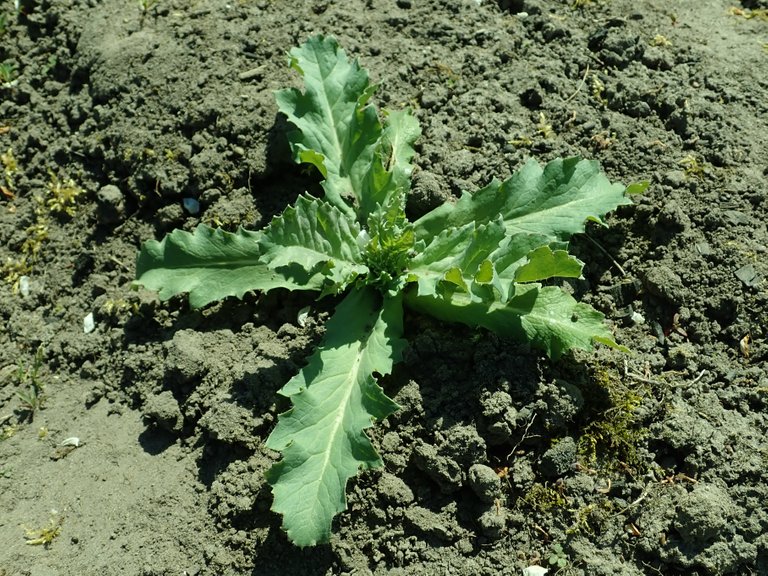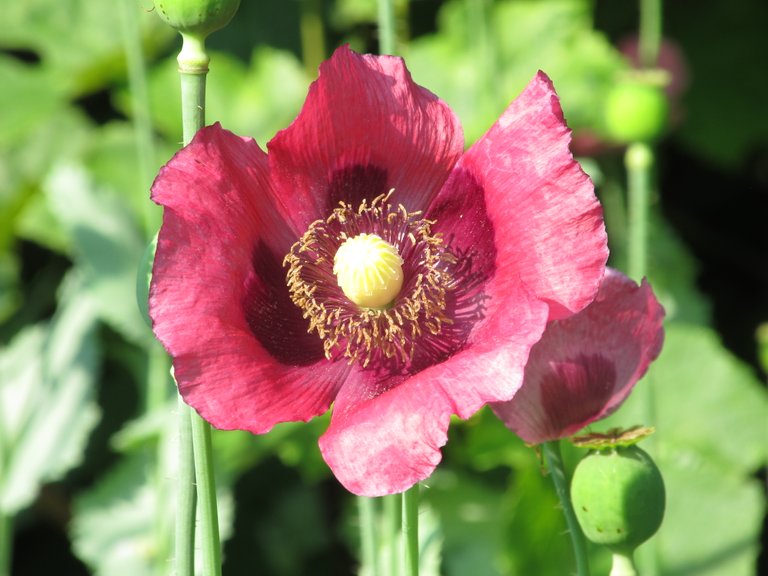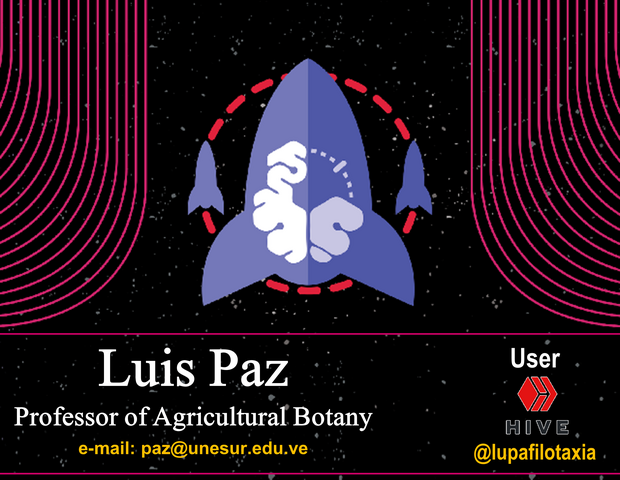Physiological and toxicological properties of Papaver somniferum

This manuscript has been schematized under the premise of socializing botanical content, and the psychoactive effects of the plant material Papaver somniferum (Poppy). I hope that the users of the HIVE platform, especially the members of the #STEMsocial community, will enjoy the contribution.
Introduction
According to ethnobotanical reports, the extracts based on vegetative structures of Papaver somniferum (Poppy), are used to suppress headaches, muscle aches, among others. These positive effects on health have been related to psychoactive substances of analgesic action, such as morphine and codeine present in the secondary metabolites of wild and cultivated specimens of Poppy [1].
In addition to the analgesic effect, specimens of Papaver somniferum are also characterized by the secretion of latex from their reproductive structures, which generates opiate exudates (phyto-substance alkaloids of narcotic action) such as heroin, which causes addictive effects related to multiple physiological disorders, especially on the cardiovascular system in chronic users. [2].
However, based on scientific results of referential importance on the addictive effects of narcotic substances of opiate origin, the aim of this post is to socialize botanical aspects related to the pharmacokinetic action, pharmacological and psychoactive effects of the species Papaver somniferum (Poppy).
General features
Taxonomy and distribution
Papaver somniferum, is a plant species of herbaceous biotype, artificially located in the Division: Magnoliophyta., Class: Magnoliopsida., Order: Ranunculus., Family: Papaveraceae, Gender: Papaver and Species: Somniferum, of Asian origin, with distribution essentially in predominantly mesothermal (temperate to cold) habitats.
Common names
Specimens of Papaver somniferum are generally identified as Poppy, although they are also known as; Opium poppy, Opium plant, Opium or Papaver.
Vegetative and reproductive morphology
According to archaeo-botanical records, the plants of Papaver somniferum exhibit iconographic and taxonomic profiles, with the following morphological characterization: herbaceous stems with pointed appendages, simple petiolated lower leaf blades, and upper embracing, oblong-lobed to dentate aspect, polychromatic flowers of pedunculated morphology, capsule-type laticulated fruits, and small seeds of reniform aspect [3].

Fig. 2 Leaflets from seedlings of Papaver somniferum (Poppy). Public domain image, Author: Salicyna, 2019 / CC 4.0
Edaphoclimatology of the Poppy
The plants of Papaver somniferum, are vegetal materials that demand constant light interception, from there that, express their maximum potential in edapho-climatic conditions that manifest photoperiods with more than 12 hours light, precipitation superior to 2,000 annual millimeters, inferior temperature of 15 and superior maximum of 30°C, soils of sandy texture, loose, with high nutritional content and pH between the 6.5 - 8.

Fig. 3 Reproductive structures of Papaver somniferum (Amapola). Public domain image, Author: Donaviamoris, 2015 / CC 4.0
Pharmacokinetic action
Poppy alkaloids and opiate exudates
The heroin, is the main biomolecule of psychoactive action derived from opioid exudates in fruits of capsular morphology of Papaver somniferum, however, the morphine is another of the alkaloids biosynthesized in reproductive structures of Poppy specimens, both substances are used in pharmacology for the treatment of numerous disorders, mainly because of the chemical capacity they express by participating in the modulation of pain, this because, their receptors act by intervening through neurological circuits and critical regions of the central nervous system [4].
Pharmacokinetics of opiate substances
The biological receptors, reported in molecular and pharmacological studies for opiate substances of Poppy are; Mu (μ), Delta (δ), Kappa (κ), and like-1 (ORL1), however, in terms of pharmacokinetic bioexplorations the opiate substance most studied at the cellular level is heroin, indicating in multiple investigations the following response; A. absorption and binding to brain structures, B. activation and antinociceptive signalling, C. signal transduction which activates dopamine (endogenous substance which modifies states of euphoria), hence its narcotic effect in modulating behaviours of analgesic action, depression and anxiety.

Fig. 4 Fruits with a capsular morphology of Papaver somniferum (Amapola). Public domain image, Author: Parent Géry, 2011 / CC 3.0
Pharmacological effects
Clinical Answers
To date, there are multiple pharmacological effects of an analgesic type attributed to psychoactive substances of opiate origin of Papaver somniferum, hence, commercial drugs (Codeine, Noscapine, Vademecum, among others) based on heroin and morphine are frequently used to calm headaches, muscle aches, among others, as well as to treat disorders such as; cancer, diarrhea, and bronchial affections, essentially because of their antispasmodic effect [5].
Addictive effects of Papaver somniferum
Routes of consumption of psychoactive substances based on poppy
Intravenous injection, is the main route of administration of psychoactive substances of opiate origin based on poppy (Papaver somniferum), however, is also usually consumed orally and by inhalation, it is important to note that this third form of consumption is not the most used.

Fig. 5 Psychoactive latex-based heroin powder. Public domain image, Author: Rebcenter, 2016 / CC 4.0
Reported toxicological disorders
In relation to the addictive effects, the toxicological risk factors reported in chronic users are varied, among these; premature atherosclerosis, bronchospasm, respiratory depression, diabetes, constipation, hypotension, nausea, sedation, urinary problems, metabolic syndromes, hives, on the other hand, numerous clinical studies have shown that the consumption of psychoactive opiate substances such as heroin, increase the risk of heart attacks and strokes [4] .
Papaver somniferum consumption and legal aspects
Legal provisions
The consumption of heroin and morphine, from poppy specimens (Papaver somniferum), has become a generalized epidemic with an international profile, which day after day takes the lives of people by overdose, without ignoring the innumerable imprisonments for the use of these illegal substances, This is according to data revealed by the monitoring program HIDTA (Areas of High Intensity of Drug Trafficking), in whose records the last decade was characterized by presenting the most alarming increases, positioning the United States as the main consumer of psychoactive substances of opiate origin, approaching one million users in 2014 [6]. However, from the medical point of view, there are positive approaches that have emerged from the results obtained in clinical, pharmacological and epidemiological studies, where it has been demonstrated that moderate concentrations of drugs based on isolates of opiate substances such as heroin and morphine can promote multiple health problems, not only because of their analgesic action, but also because of their antioxidant, antithrombotic and anti-inflammatory properties and a significant decrease in blood glucose [1].
SCIENTIFIC CONTRIBUTIONS OF THIS PUBLICATION
- Like the previous manuscripts shared with the entire academic community active in the HIVE platform, the published material synthesizes content on the physiological and toxicological properties of the psychoactive species Papaver somniferum (Poppy), by presenting scientific-technical information on the general characteristics, pharmacokinetic behaviour, pharmacological and psychoactive effects shown by exudates obtained from Poppy latex, essentially those with narcotic properties of opiate origin such as heroin and morphine.
BIBLIOGRAPHICAL REFERENCES CONSULTED AND CITED:
[1] Sedigheh A.,, Nizal S., Gholam A., and Reza R. Effect of opium addiction on new and traditional cardiovascular risk factors: do duration of addiction and route of administration matter?. Lipids in Health and Disease. 2008;7:42. Article: Online access
[2] Masoomi M., Ramezani M., and Karimzadeh H. The relationship of opium addiction with coronary artery disease. International journal of preventive medicine. 2010;1;3:182–186. Article: Online access
[3] Guerra E., López J. El registro arqueobotánico de plantas psicoactivas en la prehistoria de la Península Ibérica. Una aproximación etnobotánica y fotoquímica e interpretación a la evidencia. Complutum. 2006;17: 7-24. Article: Online access
[4] Ream Al-Hasani., and Michael R. Molecular Mechanisms of Opioid Receptor-Dependent Signaling and Behavior. Anesthesiology. 2011; 115;6: 1363–1381. Article: Online access
[5] Yagiz A., Tugba G., Baohong Z., and Turgay U. Manipulating the Biosynthesis of Bioactive Compound Alkaloids for Next-Generation Metabolic Engineering in Opium Poppy Using CRISPR-Cas 9 Genome Editing Technology. Scientific Reports. 2016;6:30910. Article: Online access
[6] Marciano M., Panicker S., Liddil G. Development of a Method to Extract Opium Poppy (Papaver somniferum L.) DNA from Heroin. Sci Rep. 2018;8:2590. Article: Online access
ATTENTION
Readers and followers
If you wish to read more scientific articles in English or Spanish, of excellent academic quality, do not hesitate to visit #STEMSocial and #STEM-espanol, communities that promote scientific content mainly in the areas of Science, Technology, Engineering and Mathematics.
OBSERVATION

0
0
0.000
#Posh Twitter:
https://twitter.com/lupafilotaxia/status/1282204616759943168
Another awesome effort at curating plant information on the web. I've heard a lot about this plant and would be interesting to see if it grows somewhere around here in Nigeria.
Hello @gentleshaid.
I firmly believe that this type of platform (HIVE) is an ideal means of disseminating botanical content, to promote the positive effects offered by the secondary metabolites present in plants. Without a doubt, these spaces allow us to educate and raise awareness. In one of the consulted articles I read that in Nigeria it is used as a powerful analgesic, but I have no information about whether the specimens of Papaver somniferum have wild growing areas in Nigeria.
Thank you. I will do a bit of research on that and refer back
Greetings dear professor @lupafilotaxia, I am surprised by the pharmacological usefulness of this plant for certain pathologies, interesting content that educates us about the various functions of various little-known plants. We’re still in communication.
Its positive appreciation is to be welcomed as an additional impulse in the constant search to publish botanical manuscripts of a utilitarian nature.
My friend @amestyj, we precisely take advantage of the possibility that the HIVE platform offers us, of acting not only as a social network, but also as a window for scientific diffusion, to socialise this type of information which in some societies is a rather controversial subject, so little information is handled, hence the importance of publications with a phytopharmacological and psychoactive profile.
Thanks for visiting the blog.
It is always a pleasure to visit your blog dear professor @lupafilotaxia on this occasion a topic related to the Physiological and toxicological properties of Papaver somniferum, thanks for your excellent work. Successes
Greetings @rbalzan, good to have you visiting the blog.
Hello @ @lupafilotaxia,
I waited to read this until there were no distractions so I could enjoy the article and focus. It's hard to imagine a plant that has had a greater influence on world history than the poppy. And yet most of us know very little about it.
I took an excursion and read one of your source articles (Molecular Mechanisms of Opioid Receptor-Dependent Signaling and Behavior. Anesthesiology. 2011; 115;6: 1363–1381). That was very interesting...tables that list side effects you mention in your article. I had no idea there were so many side effects.
Thank you for this article. It's a beautiful plant, with amazing potential for good, and harm.
Regards,